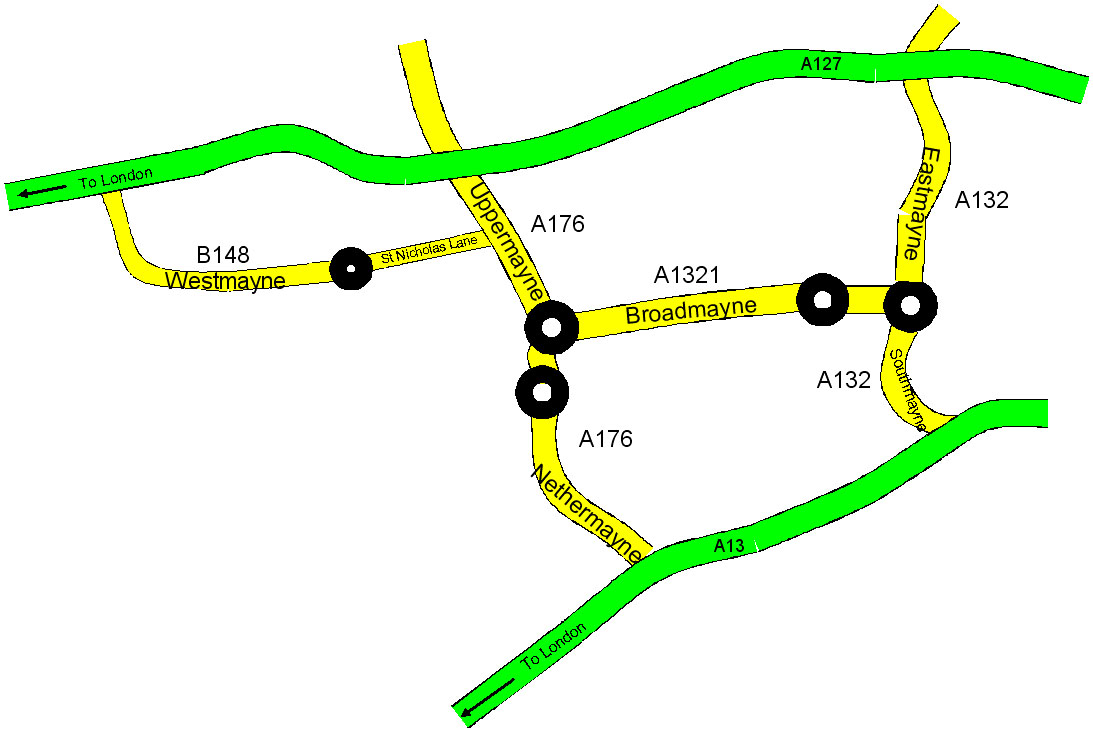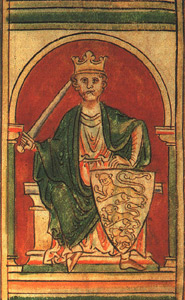|
Charles Leatherland, Baron Leatherland
Charles Edward Leatherland, Baron Leatherland Order of the British Empire, OBE Meritorious Service Medal (United Kingdom), MSM Deputy Lieutenant, DL (18 April 1898 – 18 December 1992) was a British journalist and Labour Party (UK), Labour Party politician. Early life Charles Edward Leatherland was born in Aston, Birmingham on 18 April 1898. He was the eldest son of John Edward Leatherland, an Army bandmaster. His mother Elizabeth Leatherland (née Abbis), a blacksmith's daughter, died when he was 9 years old. He attended Harborne School, Birmingham and left school at the age of 14. In 1914 at the start of the First World War he joined the 16th Battalion of the Royal Warwickshire Regiment. In 1916 he was transferred to X Corps (United Kingdom), Xth Corps headquarters where he remained for the rest of the war. He became an Acting Sergeant Major and served in France, Belgium and Germany. He was awarded the Meritorious Service Medal (United Kingdom), Meritorious Service Medal. In ... [...More Info...] [...Related Items...] OR: [Wikipedia] [Google] [Baidu] |
Order Of The British Empire
The Most Excellent Order of the British Empire is a British order of chivalry, rewarding contributions to the arts and sciences, work with charitable and welfare organisations, and public service outside the civil service. It was established on 4 June 1917 by King George V and comprises five classes across both civil and military divisions, the most senior two of which make the recipient either a knight if male or dame if female. There is also the related British Empire Medal, whose recipients are affiliated with, but not members of, the order. Recommendations for appointments to the Order of the British Empire were originally made on the nomination of the United Kingdom, the self-governing Dominions of the Empire (later Commonwealth) and the Viceroy of India. Nominations continue today from Commonwealth countries that participate in recommending British honours. Most Commonwealth countries ceased recommendations for appointments to the Order of the British Empire when they ... [...More Info...] [...Related Items...] OR: [Wikipedia] [Google] [Baidu] |
Sunday Dispatch
The ''Sunday Dispatch'' was a prominent British newspaper, published between 27 September 1801 and 18 June 1961. It was ultimately discontinued due to its merger with the ''Sunday Express''. History The newspaper was first published as the ''Weekly Dispatch'' in 1801. The name was changed to the ''Sunday Dispatch'' in 1928. In 1903, the Newnes family sold the paper to Alfred Harmsworth and Lord Rothermere. The new owners then turned it around from bankruptcy and into the biggest selling Sunday newspaper in Britain at the time. Due to editor Charles Eade's role as Press Liaison officer for Lord Mountbatten during World War II, distribution of the ''Dispatch'' was up from 800,000 to over 2 million copies per edition in 1947. In 1959, Eade and the editor of the ''Daily Sketch'' were fired due to a comment from Randolph Churchill that Esmond Harmsworth, 2nd Viscount Rothermere was "pornographer royal" for his ownership of both the ''Daily Sketch'' and ''Sunday Dispatch''. Under ... [...More Info...] [...Related Items...] OR: [Wikipedia] [Google] [Baidu] |
Life Peer
In the United Kingdom, life peers are appointed members of the peerage whose titles cannot be inherited, in contrast to hereditary peers. In modern times, life peerages, always created at the rank of baron, are created under the Life Peerages Act 1958 and entitle the holders to seats in the House of Lords, presuming they meet qualifications such as age and citizenship. The legitimate children of a life peer are entitled to style themselves with the prefix "The Honourable", although they cannot inherit the peerage itself. Before 1887 The Crown, as '' fount of honour'', creates peerages of two types, being hereditary or for life. In the early days of the peerage, the Sovereign had the right to summon individuals to one Parliament without being bound to summon them again. Over time, it was established that once summoned, a peer would have to be summoned for the remainder of their life, and later, that the peer's heirs and successors would also be summoned, thereby firmly entren ... [...More Info...] [...Related Items...] OR: [Wikipedia] [Google] [Baidu] |
Basildon
Basildon ( ) is the largest town in the borough of Basildon, within the county of Essex, England. It has a population of 107,123. In 1931 the parish had a population of 1159. It lies east of Central London, south of the city of Chelmsford and west of Southend-on-Sea. Nearby smaller towns include Billericay to the north-west, Wickford to the north-east and South Benfleet to the south-east. It was created as a new town after World War II in 1948, to accommodate the London population overspill from the conglomeration of four small villages, namely Pitsea, Laindon, Basildon (the most central of the four) and Vange. The local government district of Basildon, which was formed in 1974 and received borough status in 2010, encapsulates a larger area than the town itself; the two neighbouring towns of Billericay and Wickford, as well as rural villages and smaller settlements set among the surrounding countryside, fall within its borders. Basildon Town is one of the most densely populat ... [...More Info...] [...Related Items...] OR: [Wikipedia] [Google] [Baidu] |
Epping, Essex
Epping is a market town and civil parish in the Epping Forest district of the County of Essex, England. The town is northeast from the centre of London, is surrounded by the northern end of Epping Forest, and on a ridge of land between the River Roding and River Lea valleys. Epping is the terminus for London Underground's Central line. The town has a number of historic Grade I and II and Grade III listed buildings. The weekly market, which dates to 1253, is held each Monday. In 2001 the parish had a population of 11,047 which increased to 11,461 at the 2011 Census. Epping became twinned with the German town of Eppingen in north-west Baden-Württemberg in 1981. History "Epinga", a small community of a few scattered farms and a chapel on the edge of the forest, is mentioned in the ''Domesday Book'' of 1086. However, the settlement referred to is known today as Epping Upland. It is not known for certain when the present-day Epping was first settled. By the mid-12th century a ... [...More Info...] [...Related Items...] OR: [Wikipedia] [Google] [Baidu] |
Magistrates Of England And Wales
Magistrates are trained volunteers, selected from the local community, who deal with a wide range of criminal and civil proceedings. They are also known as Justices of the Peace. In the adult criminal court, magistrates decide on offences which carry up to twelve months in prison, or an unlimited fine. Magistrates also sit in the family court where they help resolve disputes that involve children, and in the youth court which deals with criminal matters involving young people aged 10-17. Established over 650 years ago, the magistracy is a key part of the judiciary of England and Wales, and it is a role underpinned by the principles of 'local justice' and 'justice by one's peers'. Magistrates typically sit as a bench of three, mixed in gender, age and ethnicity where possible, to bring a broad experience of life to the bench. They can sit alone to hear warrant applications or deal with uncontested matters heard under the single justice procedure. All members of the bench have e ... [...More Info...] [...Related Items...] OR: [Wikipedia] [Google] [Baidu] |
Honorary Degree
An honorary degree is an academic degree for which a university (or other degree-awarding institution) has waived all of the usual requirements. It is also known by the Latin phrases ''honoris causa'' ("for the sake of the honour") or ''ad honorem '' ("to the honour"). The degree is typically a doctorate or, less commonly, a master's degree, and may be awarded to someone who has no prior connection with the academic institution or no previous postsecondary education. An example of identifying a recipient of this award is as follows: Doctorate in Business Administration (''Hon. Causa''). The degree is often conferred as a way of honouring a distinguished visitor's contributions to a specific field or to society in general. It is sometimes recommended that such degrees be listed in one's curriculum vitae (CV) as an award, and not in the education section. With regard to the use of this honorific, the policies of institutions of higher education generally ask that recipients ... [...More Info...] [...Related Items...] OR: [Wikipedia] [Google] [Baidu] |
University Of Essex
The University of Essex is a public university, public research university in Essex, England. Established by royal charter in 1965, Essex is one of the original plate glass university, plate glass universities. Essex's shield consists of the ancient arms attributed to the Kingdom of Essex, and the motto, "Thought the harder, heart the keener", is adapted from the Anglo-Saxon poem ''The Battle of Maldon''. The university comprises three campuses with its primary campus located within Wivenhoe Park and campuses in Southend-on-Sea and in Loughton. Essex is rated Gold for Teaching Excellence by the TEF since 2017, named University of the Year at the Times Higher Education awards, Times Higher Education Awards in 2018, and is ranked an internationally excellent research-intensive university by the Research Excellence Framework, REF. Essex's Department of Government received Regius Professorship conferred by Elizabeth II, Her Majesty, The Queen in 2013 and the university was awarded t ... [...More Info...] [...Related Items...] OR: [Wikipedia] [Google] [Baidu] |
Buckhurst Hill
Buckhurst Hill is an affluent suburban town in the Epping Forest District, Epping Forest district of Essex, England. It is part of the Greater London Urban Area and adjacent to the northern boundary of the London Borough of Redbridge. The area developed following the opening of a railway line in 1856, originally part of the Eastern Counties Railway and now on the Central line (London Underground), Central line of the London Underground. History The first mention of Buckhurst Hill is in 1135, when reference was made to "''La Bocherste''", becoming in later years ''"Bucket Hill"'', originally meaning a hill covered with beech trees. It lay in Epping Forest and consisted of only a few scattered houses along the ancient road from Woodford, London, Woodford to Loughton. Before the building of the railways, Buckhurst Hill was on the stagecoach route between London and Cambridge, Norwich, Bury St Edmunds and Dunmow. Originally it was a part of the parish of Chigwell; there was no road co ... [...More Info...] [...Related Items...] OR: [Wikipedia] [Google] [Baidu] |
Alderman
An alderman is a member of a Municipal government, municipal assembly or council in many Jurisdiction, jurisdictions founded upon English law. The term may be titular, denoting a high-ranking member of a borough or county council, a council member chosen by the elected members themselves rather than by Direct election, popular vote, or a council member elected by voters. Etymology The title is derived from the Old English title of ''ealdorman'', literally meaning "elder man", and was used by the chief nobles presiding over shires. Similar titles exist in some Germanic countries, such as the Sweden, Swedish language ', the Danish language, Danish, Low German, Low German language ', and West Frisia, West Frisian language ', the Netherlands, Dutch language ', the (non-Germanic) Finland, Finnish language ' (a borrowing from the Germanic Swedes next door), and the German language, High German ', which all mean "elder man" or "wise man". Usage by country Australia Many local government ... [...More Info...] [...Related Items...] OR: [Wikipedia] [Google] [Baidu] |
Billericay
Billericay ( ) is a town and civil parish in the Borough of Basildon, Essex, England. It lies within the London Basin and constitutes a commuter town east of Central London. The town has three secondary schools and a variety of open spaces. It is thought to have been occupied since the Bronze Age. Toponym The origin of the name Billericay is unclear. It was first recorded as "Byllyrica" in 1291. The urban settlement, which was within the manor and parish of Great Burstead, was one of many founded in the late 13th century in an already densely populated rural landscape. Several suggestions for the origin of the place name include: * ''Villa Erica'' (Heather Villa), suggesting a Romano-British origin. * ''bellerīca'', a medieval Latin word meaning 'dyehouse or tanhouse'. * ''billers'', a traditional name for watercress, for which Bilbrook in Somerset and Staffordshire are named. Watercress was farmed in Billericay springs during the 20th century. Although the precise etymology ... [...More Info...] [...Related Items...] OR: [Wikipedia] [Google] [Baidu] |
Laindon
Laindon is a commuter town in Essex, between Basildon and West Horndon. It was an ancient parish in Essex, England, that was abolished for civil purposes in 1937. It was based on the (probably smaller) manor of the same name and now lies mostly within the urban area of Basildon. As of 2020, Laindon's population was 37,175. History The ancient Laindon parish included the chapelry of Basildon that became a civil parish in its own right in 1866. The parish included two detached pieces of coastal grazing land, one of which was on Canvey Island. It included a long finger of land north into the neighbouring parish of Great Burstead to include Laindon Common and the once larger and adjacent Frith Wood which the lord of the manor, the Bishop of London, emparked around 1260. This finger of land may have been the territory of Well Street Manor, which was mentioned in the Domesday Book. Until its abolition in 1937, there was a Laindon parish. It incorporated 412 residents around , in 1831 ... [...More Info...] [...Related Items...] OR: [Wikipedia] [Google] [Baidu] |







